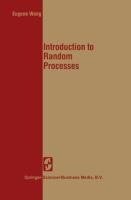
-
 Anglický jazyk
Anglický jazyk
Introduction to Random Processes
Autor: E. Wong
For most people, intuitive notions concerning probabilities are connected with relative frequencies of occurrence. For example, when we say that in toss ing a coin, the probability of its coming up "heads" is 1/2, we usually mean that in a large number... Viac o knihe
Na objednávku
49.49 €
bežná cena: 54.99 €
O knihe
For most people, intuitive notions concerning probabilities are connected with relative frequencies of occurrence. For example, when we say that in toss ing a coin, the probability of its coming up "heads" is 1/2, we usually mean that in a large number of tosses, about 1/2 of the tosses will come up heads. Unfortunately, relative frequency of occurrence has proved to be an unsatis factory starting point in defining probability. Although there have been attempts to make frequency of occurrence part of the axiomatic structure of probability theory, the currently accepted formu1ation is one based on measure theory due to Ko1mogorov. In this formulation frequency of occurrence is an interpretation for probability rather than adefinition. This inter pretation is justified under suitab1e conditions by the 1aw of 1arge numbers. The starting point of probability theory is usua11y taken to be an experi ment the outcome of which is not fixed apriori. Some fami1iar examples inc1ude tossing a die, observation of a noise vo1tage at a fixed time, the error in measuring a physica1 parameter, and the exact touchdown time of an aircraft. Let ~ denote the set of all possib1e outcomes of an experiment. For examp1e, for the experiment of tossing one die, ~ = {1, 2, 3, 4, 5, 6}, whi1e for the touchdown time of an aircraft, ~ might be chosen to be 0 ~ t < 00. We note that for a given experiment on1y one outcome is ever observed.
- Vydavateľstvo: Springer New York
- Rok vydania: 1983
- Formát: Paperback
- Rozmer: 235 x 155 mm
- Jazyk: Anglický jazyk
- ISBN: 9780387907574












